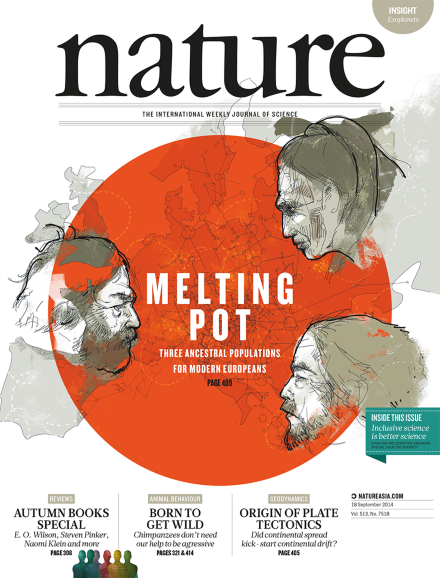Volume 513 Issue 7518, 18 September 2014
Editorial
World View
Research Highlights
Social Selection
Seven Days
News
Correction
News Feature
Comment
Autumn Books
Correspondence
News & Views
Introduction
Review Article
Article
Letter
Retraction
Corrigendum
Technology Feature
-
When disease strikes from nowhere
Collection:

